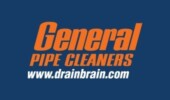
Mixing hydronic heating water with potable water
February 1, 2016 | By Lance MacNevin
Designers and installers must be aware of potential issues when considering heat sources.
We know that hydronic radiant heating is a comfortable technology, so efficient that a heated floor can often satisfy a building’s heat loss with low-temperature fluid, even below 115F (46C). This gives radiant heating systems the flexibility to work with a variety of heat sources, including water heaters, subject to codes and local requirements.
In fact, CSA B214/12 allows combined space and water-heating applications, as long as the water heater is “designated by the manufacturer for use in dual-purpose applications” and meets specific product standards. This application of a water heater provides an inexpensive source of warm water for smaller radiant heating systems, reducing the up-front cost of a separate heat source.
However, installers should be aware that building a combined hydronic and potable system, whereby the potable water contacts hydronic heating components such as pipes, fan coils, valves, expansion tanks and manifolds, could create potential health and safety issues. Some of those issues follow.
Certain hydronic heating components are not intended or certified for use with potable water. These items can include radiators, pipes and fittings, fan coils, mixing valves, expansion tanks or distribution manifolds. Such items are not necessarily marked as “Non Potable”; the absence of a “Potable Water” mark may be the only clue provided as to the item’s intended purpose. These hydronic components might contain lead within the brass alloys; trace amounts of cutting oil that are OK in hydronic systems but not OK in drinking water; or other materials that are not approved for drinking water contact.
That is why CSA B214-12 says, “All piping, components, and heat-transfer devices in contact with the potable water shall be intended for use in potable water systems.”1
Therefore, do not assume that any product sold for hydronics is automatically tested and approved for use with potable water. If non-potable components are installed so that plumbing water flows through them, then this type of installation most likely would violate regulations, may contaminate drinking water, and may void product warranties.
Fresh water usually contains lots of dissolved oxygen and disinfectants such as chlorine or chloramines. Some hydronic components can be corroded or otherwise damaged by contact with these substances.
For example, if you install an iron-body mixing valve or circulator in a combined system, that component could start to rust immediately. A rubber or plastic hydronic valve seal or gasket could be attacked by disinfectants in the fresh water and cause a leak. Or, the plastic tubing itself might not be intended for contact with hot chlorinated water (although most are) and might fail prematurely. When building a combined system, the installer must verify that each component is approved and recommended for use with potable water to avoid premature product failure.
The bacterium legionella pneumophila is found in both potable and non-potable water systems, especially with stagnant water between 95F (35C) and 122F (50C). Legionella can cause legionnaires’ disease or legionellosis, a severe, often lethal, form of pneumonia that occurs primarily when steam or vapour containing legionella is inhaled. The disease was named in 1976, when American Legion members who attended a Philadelphia convention suffered from an unusual pneumonia (lung infection). Legionella is in the news again these days, with several outbreaks identified in large cities, and innocent victims perishing. Our society is vulnerable, and our plumbing industry must do what it can to protect the public.
In a potable-hydronic system with a shared water heater, the water from the heating distribution system will inevitably mix with domestic hot water whenever the heating system is activated. After longer periods of inactivity, such as after the summer, the heating water has been stagnant for weeks or months, allowing more time for legionella to multiply.
This situation has the potential to expose users of the domestic hot water to legionella bacterium through showers and other hot-water uses. To help prevent this, CSA B214-12 requires that “a means shall be provided to prevent the stagnation of potable water in a hydronic heating system by recycling or flushing the contents not less than once every 24 h.”2 However, if the timer used to mix the water fails or is deactivated, there is the potential for serious health risks.
Studies show that flushing a water system to effectively kill legionella requires water temperature over 160F (71C) throughout the entire piping network for at least 30 minutes; at lower temperatures, some bacteria remain protected inside the biofilm lining the pipes. However, supplying water this hot through radiant tubing embedded in concrete may damage the concrete or any flooring it contacts, and similar risks apply to other radiant installation techniques. Proper flushing is not a great option from the heating system’s perspective. Not to mention, it may be dangerous to have the water heater set to a temperature above 160F for any duration.
RISKS AND BENEFITS
Combined space and water-heating installations where the plumbing system shares a heat source and water with the hydronic distribution system are allowed in certain circumstances using specifically-approved equipment. This arrangement can reduce the up-front cost of building a small radiant heating system.
On the other hand, designers and installers of these combined systems must be aware of the potential issues. Concerns can be avoided by using a dual-purpose water heater where the potable and hydronic water do not mix, or by using approved heat exchangers to separate the potable water from the hydronic fluid.
Lance MacNevin, P.Eng. is the director of engineering for the Plastics Pipe Institute’s Building & Construction Division and a member of CSA’s B214 Technical Committee. MacNevin is a mechanical engineering graduate of the University of New Brunswick. He may be reached at lmacnevin@plasticpipe.org.
REFERENCES
1,2 CAN/CSA-B214-12 – Installation code for hydronic heating systems, Third Edition, www.shop.csa.ca
For more information about legionnaires’ disease, visit http://legionella.org/ or Health Canada’s information at www.hc-sc.gc.ca/ewh-semt/air/in/qual/legionnaire-eng.php.




